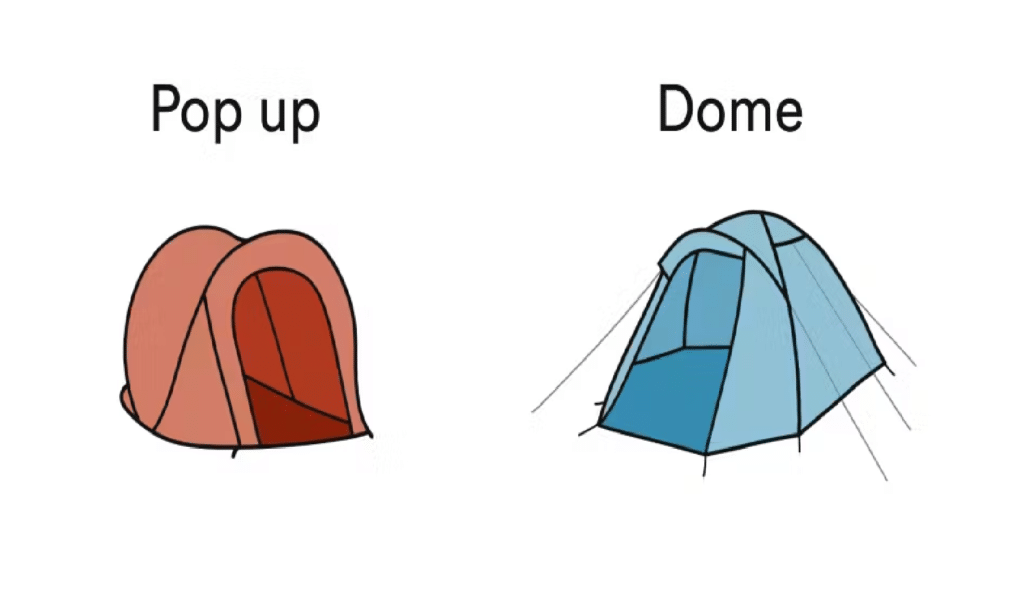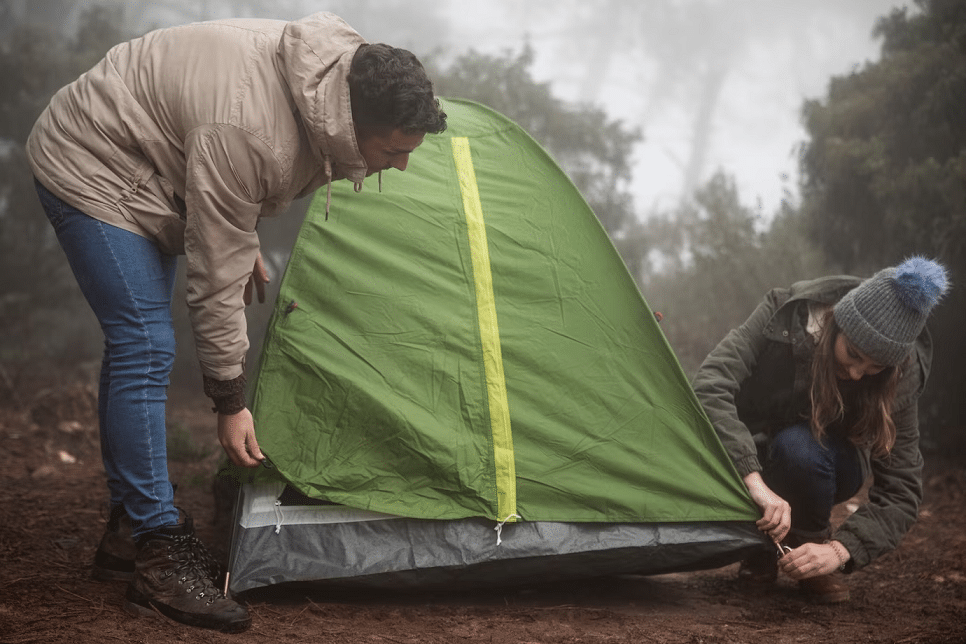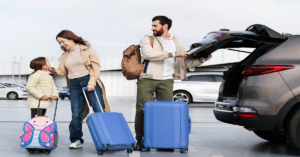The tent you choose for winter camping must provide you with protection from the elements. There are some similarities between winter tents and summer tents, but there are also some differences. You need shelter if you’re going to survive winter storms, as they’re unpredictable and deadly.
During those cold winter nights, these tips and options can help keep you warm and dry;
Double Walled Tents
During the winter, it is essential to have a double-walled tent. A single-wall tent will not keep you dry from the outside or prevent condensation from forming inside. A tent with two walls is better able to keep out moisture because it has two layers of fabric, one that is waterproof and one that keeps out wind and snow.

Geodesic or Dome Tents
Their shape and structure resemble geodesic domes, making them also known as geo domes. In high winds and heavy snowfall, they are very strong and stable due to the fewer poles than traditional tents, which allow them to withstand higher winds without collapsing. However, if you’re only taking short trips, this shouldn’t be an issue since they can be packed up pretty small once they’re taken down. The downside is that they take up more space than other types of tents, but they can be taken down and stored in smaller places once they’ve been taken down.

Strong Zippers and Waterproofing
If you want your winter tent to stay closed during a storm, ensure the zippers are strong enough to withstand rough use. Your tent should also be waterproof so that it won’t soak up water when it rains or snows heavily outside.
Tents with Snow Skirts or Snow Flaps
Those tents have an extension that covers the bottom, preventing snow from getting inside. When it snows heavily, it will help keep your tent from becoming snow-filled. Additionally, if the wind blows up, the skirt will keep wind from blowing into your tent. It also saves you time and energy when getting in and out of your tent since it doesn’t require you to remove all your outer layers, which could cause you to lose more heat.
Stuffable Footprint
In camping, footprints are tarps that are placed under tents to prevent rocks, sticks, pine conifers, and other sharp objects from damaging it. As well as protecting it from getting dirty when you’re carrying all your gear, it also prevents it from getting damaged. In addition, these footprints can be rolled up and stored in the included pouch until needed, so they take up less room in your pack when not in use. If you’re backpacking with an ultralight backpack with limited storage space, this is especially helpful.

Double Pitched Tents
The double-pitched tent is designed to allow more headroom inside than the single-pitched one, which makes it ideal for cold-weather camping. A multi-pitch tent provides you with more living space than a single-pitch tent, so it’s great if you have a large group or if more than one person wants to sleep in the same tent.
Free-Standing Tents
In terms of shape, size, and material, free-standing tents can be found in a wide variety of designs and sizes. In many of these tents, there are extra features that keep snow from accumulating, while allowing sunlight through the mesh to be seen as white light. Additionally, some have vestibules where you can keep your gear out of the weather when not in use. Except for that, they’re basically just like any other tent, except for one important difference. It is not necessary to secure non-freestanding tents to the ground with stakes or ropes before pitching a free-standing tent.

Down Sleeping Bags
It is ideal to use down sleeping bags for winter camping because they provide more warmth than synthetic alternatives without being too heavy or bulky. It’s necessary to find down bags that are rated at least 0F (minus 18C), as temps below zero Celsius (32F) and single digits are quite common.
Winter Sleeping Pads
A good quality sleeping pad is crucial for every camper, especially if you’re camping during cold weather. Choosing one with insulation on both sides will help you keep your body warm and dry while keeping moisture at bay.

Size and Space
Depending on the number of people sleeping in your tent, you will need to choose the right size tent. When camping alone or with a small family, you should choose a 2-person tent. If you are going out with friends or with a large family, choose a tent that can accommodate 4-6 people.
When choosing the right tent size, you should also consider how much space each person is going to need. You can choose a bigger one if you want more space, but if you will only be using it for one person, you should get a smaller one so that you don’t waste money and space purchasing extra poles and ropes.
Conclusion
Winter camping can be an extremely rewarding experience. Utilizing the proper equipment, which includes a good quality winter tent, is crucial to maximizing your chances of enjoying the wilderness rather than enduring it. As well as taking all safety precautions, you should avoid any unfortunate accidents, like hypothermia or frostbite, which would ruin your experience. The best time to go camping in the winter is when you are well prepared as well as when you are having fun in the wilderness.



